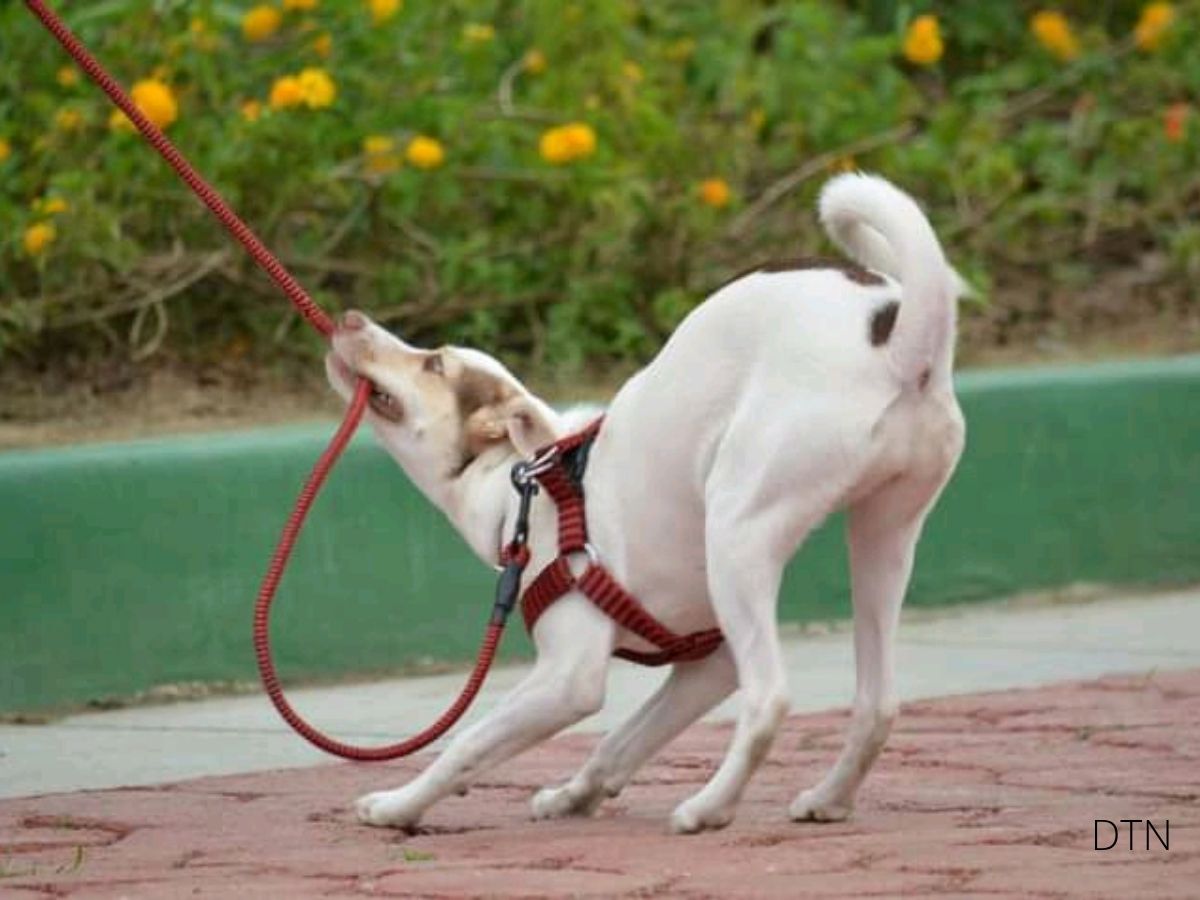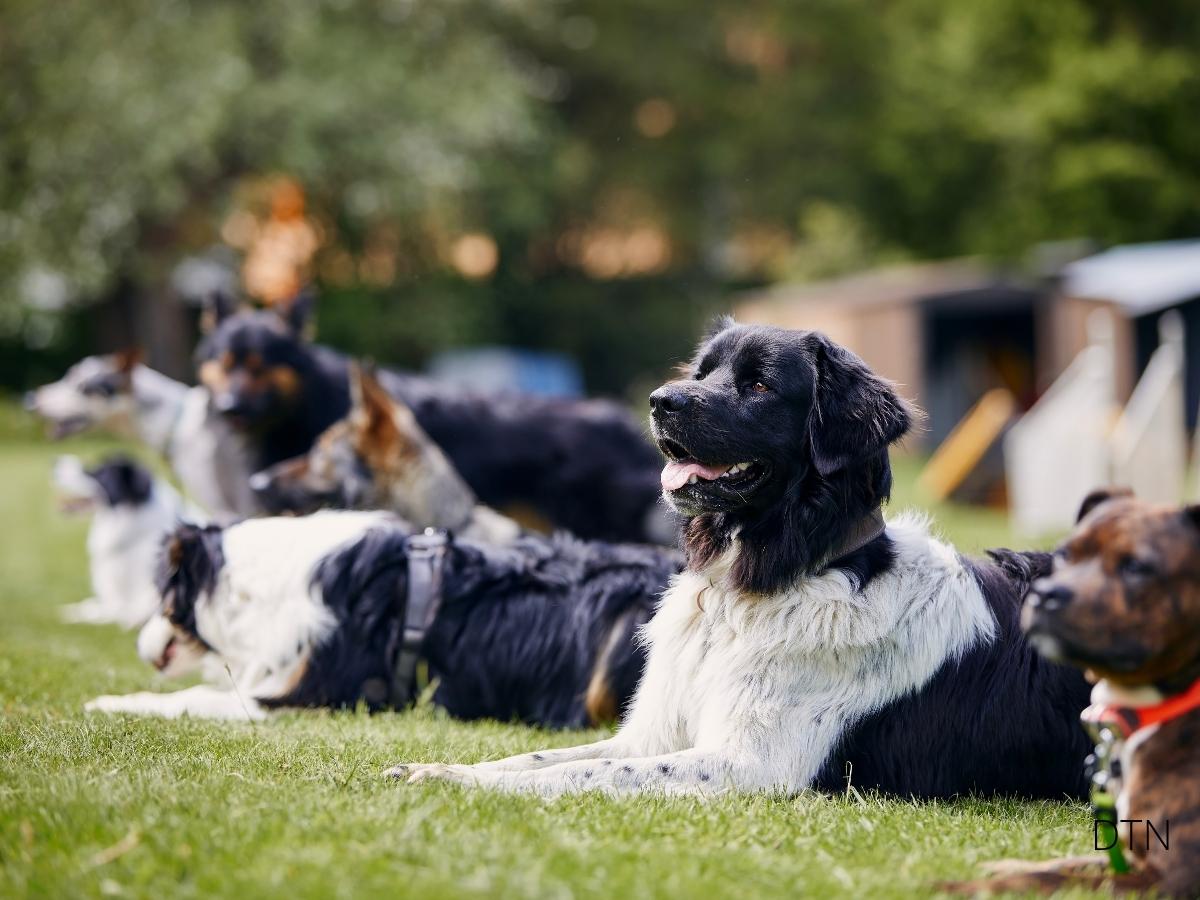Introduction: When Sound Becomes the Enemy
Your Border Collie performs flawlessly in your quiet backyard, but at the park? She’s a different dog entirely. Eyes darting, body tense, that reliable recall completely forgotten. You might think she’s being stubborn, but something deeper is happening – her brain is experiencing a neurological traffic jam that makes focus nearly impossible.
Understanding how auditory overstimulation hijacks our dogs’ neural pathways reveals that what looks like disobedience is actually a brain overwhelmed by competing signals. Let us guide you through the neuroscience behind why your furry friend loses focus in noisy settings, and how you can rebuild their attention using evidence-based techniques. 🧠
The Neuroscience Behind Noise Disruption
Your Dog’s Overwhelmed Brain
The prefrontal cortex (PFC) acts as your dog’s executive control center, managing impulse control and sustained attention. In quiet environments, it maintains a delicate balance between excitatory neurotransmitters like glutamate and inhibitory ones like GABA. This allows your dog to filter relevant information and focus on your voice.
But auditory overstimulation disrupts this neurochemical harmony. The brain’s resources become consumed by analyzing every potential threat instead of processing your commands. Meanwhile, the amygdala – your dog’s alarm system – doesn’t pause to evaluate if that boom was thunder or a truck. It immediately triggers the stress response, flooding the body with cortisol and adrenaline. Within seconds, your dog shifts from “learning mode” to “survival mode.”
Dopamine and norepinephrine, normally responsible for attention and alertness, become erratic under stress. Your dog literally cannot access the reward sensation from following commands. It’s not forgetfulness – it’s a temporary inability to access those neural pathways while the brain manages what it perceives as an emergency.
Reading Your Dog’s Stress Signals
Observable Signs of Breakdown
Early Warning Signs:
- Scanning behavior – rapid head movements, inability to maintain eye contact
- Tension indicators – tightened facial muscles, ears pinned back or rotating constantly
- Breathing changes – shallow panting without physical exertion
- Body stiffness – visible muscle tension, rigid tail position
Escalation Behaviors:
- Freezing responses – becoming statue-still, appearing “zoned out”
- Displacement behaviors – excessive lip-licking, yawning when not tired, sudden scratching
- Avoidance attempts – hiding behind you, pulling toward exits
- Stress vocalizations – whining, excessive barking, unusual quietness
These aren’t defiance – they’re neurological circuit breakers preventing total system overload.
Individual Differences Matter
Herding breeds like Border Collies were bred for hypervigilance, making them particularly sensitive to auditory stimuli. Their brains constantly scan for environmental changes. Guardian breeds evaluate every sound as a potential threat. Meanwhile, some companion breeds show remarkable variability – one Cavalier might remain calm while another is severely noise-phobic.
Your dog’s history shapes everything. Puppies exposed to varied sounds during their 3-14 week socialization window develop resilient neural pathways. But a single traumatic experience – fireworks while alone, for instance – can create lasting hypersensitivity. The amygdala files these under “extreme danger” and remains hypervigilant forever after. 🐾
The Hidden Cognitive Burden
When Working Memory Crashes
Picture your dog’s working memory as a desktop with limited space. Noise doesn’t just add items – it dumps an entire filing cabinet demanding immediate sorting. Research shows noise significantly increases cognitive load, directly affecting working memory capacity.
Simple commands might survive moderate noise, but complex sequences become impossible. The brain simply cannot process “go to your mat, lie down, and stay” when it’s already maxed out filtering environmental sounds. Even after noise stops, elevated cortisol continues impairing the hippocampus and prefrontal cortex. Your dog might remain distracted for hours – their brain still swimming in stress chemicals.
Building Resilience Through Training
The Gradual Desensitization Protocol
Week-by-Week Timeline:
- Week 1-2: Play recordings at 5-10% volume during calm activities
- Week 3-4: Increase to 15-20% volume with varied sounds
- Week 5-6: Progress to 25-30% volume during light training
- Week 7-8: Reach 35-40% volume in different rooms
- Week 9-12: Approach real-world levels with movement work
The key is invisible progression – if your dog shows any stress, you’ve moved too fast. Successful sessions look boring: just a relaxed dog with barely audible background sounds.
The dog is the god of frolic.
– Henry Ward Beecher

Counterconditioning: Rewriting the Story
While desensitization reduces fear, counterconditioning creates positive associations. The moment your dog hears the problematic sound (at manageable volume), provide something they absolutely love. Timing is critical – rewards must appear within seconds, creating clear cause-and-effect. The sound becomes a predictor of joy rather than danger.
Scent Work: The Focus Hack
When traditional training fails, scent work engages different neural pathways less affected by auditory stress. The seeking system can override mild anxiety, creating a flow state where attention narrows to following odor molecules. This intense concentration crowds out anxiety and releases dopamine, improving focus further. Many dogs who can’t perform basic obedience in noise successfully complete scent work. 🧡
Environmental Management Solutions
Creating Safe Soundscapes
Essential Safe Zone Elements:
- Sound barriers – heavy curtains, draft stoppers, sound-absorbing panels
- Comfort items – raised-edge bed, your-scented blankets, favorite toys
- Calming additions – white noise machine, pheromone diffuser, dim lighting
- Engagement tools – special puzzle feeders, long-lasting chews
- Environmental control – interior room location, consistent temperature
White noise provides an acoustic buffer, making sudden sounds less jarring. Classical music at 1-2 kHz frequency shows particular calming effects. Compression garments like “Happy Hoodies” both muffle sound and provide calming pressure. Some dogs even learn to seek their ear protection when stressed, having associated it with relief.
Welfare Implications
The Misdiagnosis Crisis
Common Misinterpretations vs. Reality:
- “Ignoring me at the park” → Brain cannot process verbal cues over noise
- “Being stubborn about walking” → Overwhelmed by traffic sounds
- “Won’t do known commands” → Working memory overloaded
- “Sudden aggression” → Fear-based reactivity at breaking point
- “Destructive behavior” → Coping mechanism for unmanaged anxiety
Many dogs labeled “stubborn” are physiologically unable to focus due to acoustic stress. Punishing them adds emotional stress to cognitive overload, damaging the human-animal bond. When handlers understand their dog is struggling, not defying, compassion replaces frustration.
Supporting Working Dogs
Service dogs must maintain focus despite acoustic chaos – a guide dog navigating intersections or a PTSD dog providing grounding in crowds. Their training involves systematic “bombproofing” to every conceivable sound. The working mindset provides some protection, but handlers must recognize subtle stress signals and provide breaks before breakdown occurs.
Military and police dogs face even greater challenges with gunfire, explosions, and crowd control. Selection screens for natural noise resilience, followed by extensive conditioning. These dogs often wear specialized hearing protection, recognizing that noise-induced stress impairs operational performance.
Building Resilience from Puppyhood
The 3-14 week socialization window is crucial. Sound exposure should be systematic but gentle – variety matters more than intensity. Play recordings during positive activities like feeding. Include household appliances, traffic, sirens, animals. A puppy experiencing fifty different sounds at comfortable volumes develops better coping skills than one exposed to few loud sounds.
Never rush progression based on age – respect individual differences. Some naturally sensitive puppies need slower advancement with more support. Structure exposure in short sessions with recovery time between. The developing nervous system needs to return to baseline and build resilience gradually.
Conclusion: From Understanding to Action
What appears as distraction or disobedience represents a complex interplay of neuroscience, emotion, and learned experience. Your dog’s inability to focus in noise isn’t a training failure – it’s a brain struggling to process an overwhelming world.
The path forward requires understanding and support. Recognize acoustic stress signs, implement gradual training protocols, and create environmental modifications respecting your dog’s sensory experience. Remember that every dog’s threshold differs based on genetics, experience, and ongoing support.
Most importantly, addressing noise-related focus issues enhances quality of life. A dog who maintains calm focus despite environmental noise isn’t just more obedient – they’re more confident, less stressed, and better able to enjoy life alongside us. So next time your furry friend seems “stubborn” in noise, pause and consider: are they being defiant, or asking for help navigating an overwhelming acoustic world? Your answer shapes not just their behavior, but your entire relationship. 🐾






